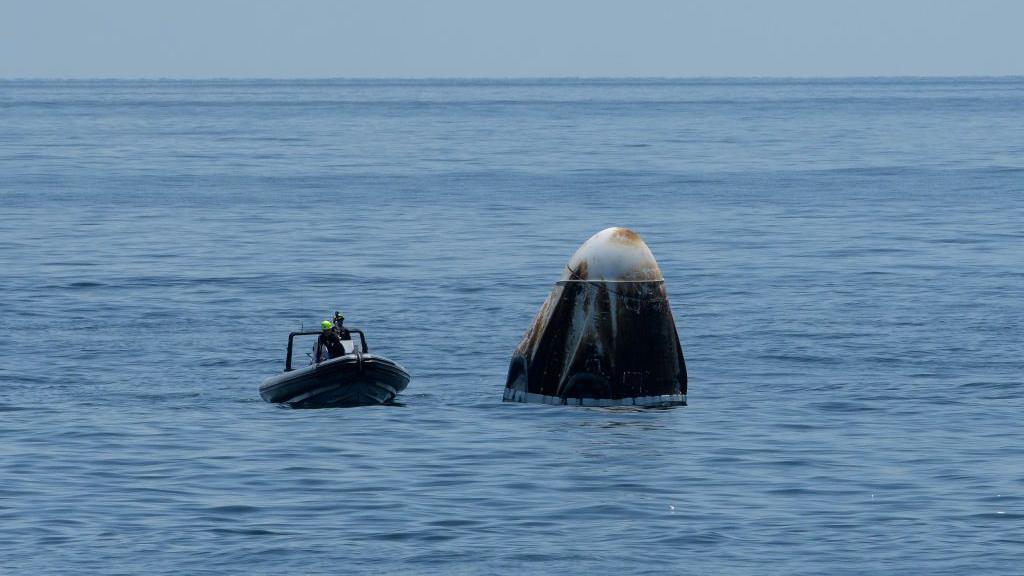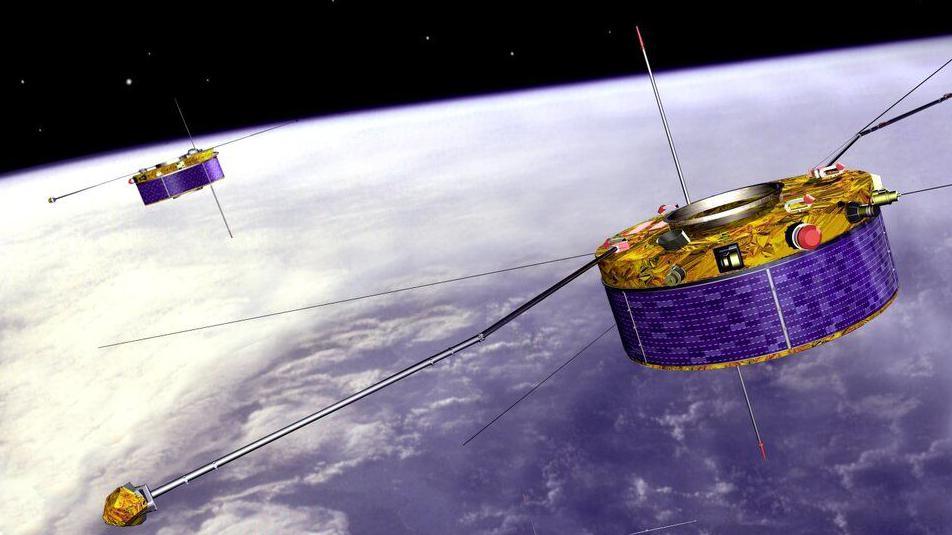To Earth in flames: ESA to study satellite re-entry

The Cluster satellites were launched in 2000 and have been monitoring the Earth's magnetic environment
- Published
As the saying goes, what comes up must come down - and the same can be said of satellites.
While there's lots of research that goes into launching satellites into Earth's orbit, there's not so much on how they eventually plop back down to Earth.
This could all change now as scientists from the European Space Agency (ESA) are preparing to study the return of four identical satellites as they re-enter Earth's atmosphere.
It's hoped the study - which the ESA say is the first of its kind - will help us better understand the end of a satellite's life and could help prevent space junk from building up around our planet.
More stories about space junk
First ever space junk fine issued
- Published17 October 2023
Giant litter-picking plans for space junk
- Published16 November 2022
Space junk lights up California sky
- Published3 April 2024
How will the Cluster satellite experiment work?

A satellite burning up as it travels through Earth's atmosphere
Scientists on board a small plane will collect data on how and when the returning satellites break down upon entering Earth's atmosphere.
Each window of the plane will have cameras and equipment looking out of it.
Operators have set up the satellite Salsa to target a specific place on September 8, 2024.
More than 20 scientific instruments will be looking for an explosion, tracking the fragments and recording as much detail as possible.
It may take a few minutes, or even hours to find out if the experiment was a success because of the limited connectivity on the plane and its isolated location.
What difficulties could the team face finding the satellite?

This is how a space capsule looks when it lands in the ocean
The Cluster satellites were not designed to do a controlled re-entry, so scientists have to predict where and when it will land.
Cluster Operations Manager Bruno Sousa said: “Back in January we tweaked Salsa’s orbit to make sure that on 8 September it experiences its final steep drop from an altitude of roughly 110 km to 80 km.
“This gives us the greatest possible control over where the spacecraft will be captured by the atmosphere and begin to burn up.”
Telescopes will be used to track where it is going and if there are any changes.
Because the re-entry takes place during the day, it will be harder to spot than it would be at night and shortens the time scientists have to tune their instruments.
It also makes it more complicated for some of the equipment that will have to filter out the Sun’s radiation from the signals they are trying to catch.
What happens next in the satellite experiment?

The remaining Cluster satellites will come back down to Earth over the next few years
Cluster has four identical satellites that will re-enter under slightly different circumstances and angles.
As the satellites are all the same, it means this is a repeatable experiment which is ideal for the scientists to work with.
ESA operators will manoeuvre the three remaining Cluster satellites to line them up for re-entries in remote locations.
Rumba (Cluster 1) will come down in November 2025, and Samba (Cluster 3) and Tango (Cluster 4) in August 2026.
The ESA says it wants to stop the creation of space debris by 2030.
Their findings could be used to make satellite re-entries safer and more sustainable in the future.
More spectacular space stories!
- Published20 August 2024

- Published21 August 2024

- Published16 August 2024

